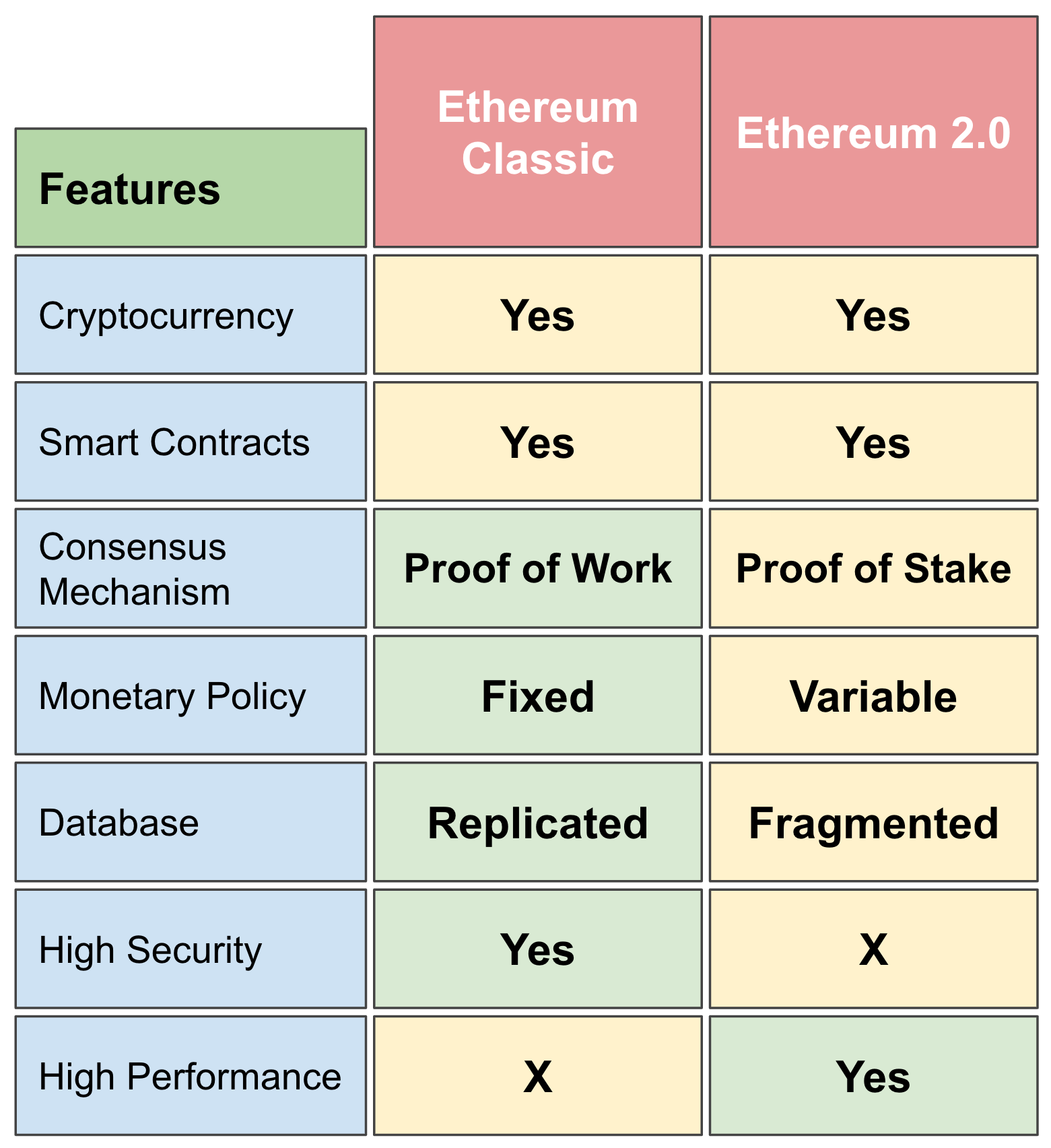
Image Source
Ethereum Classic considered the fork of Ethereum. In reality, Ethereum is the fork of Ethereum Classic.
What is Ethereum Classic (ETC)?
Ethereum Classic is a fork of Ethereum that took place after TheDAO's hack on June 17, 2016. While the start-up Slock.it raises more than 200 million dollars, partly in Ethereum, a hacker manages to embezzle part of this money. The fork intervenes to go back and thus divide the blockchain into 2 distinct entities, thus making it possible to reimburse unhappy contributors. Result, a second Ethereum blockchain appears, supported by all the big names of Ethereum like Vitalik Buterin. So, Ethereum Classic is the original Ethereum channel, hence the word "Classic".
One of the mottos of ETC is "immutable" which means impossible to change. For Ethereum Classic contributors, no matter what happens, you can't go back, no one should be able to make changes, whatever the cause. While the majority of people have switched to Ethereum, notably Vitalik Buterin and Gavin Wood, some people have stayed on the original blockchain, mainly for ideological reasons. The modification of the Ethereum blockchain following a single hack shows us that it can be affected by human actions. It is also important to clarify that fraudulent ethers are still present on the Ethereum Classic blockchain, which tends to give an image of scammers to people in favor of ETC.
Image Source
Ethereum and Ethereum Classic have a common goal, only their visions differ.
How does Ethereum Classic work?
The immutability of the blockchain is one of the essential points of ETC. No matter what happens, the ETC blockchain should not be changed. From the moment something happened, it is (almost) unthinkable to go back.
ETC uses the Ethereum Virtual Machine (EVM) which can execute scripts, smart-contracts, and dApps…
The functionalities offered by Ethereum Classic are in majority comparable to those offered by Ethereum. ETC makes it possible to transfer value to other people but also to operate intelligent, automatic and complex contracts which cannot be modified or censored. The specifics of block duration, size and rewards are almost identical.

Image Source
The desire to focus on IoT (Internet of Things) is clearly announced. The goal is to become an efficient way to connect many devices around the world so that they can exchange value and contracts.
One of the problems with ETC is the lack of compatibility with its fork: Ethereum. While the majority of the community, and therefore of the developers, have switched to this new blockchain, ETC is no longer compatible with updates from ETH. Indeed, while ETH will gradually switch to PoS (proof of stake), ETC will continue to evolve into proof of work (PoW).
Running a node on ETC keeps the blockchain 100% decentralized with a P2P network. The main role of a node is to connect to others to download and synchronize data. Here is the software allowing you to rotate a node:
- Geth
- Parity
- Mantis
- Multi-Geth
Ethereum Classic uses a Proof-of-Work (PoW) consensus. Thus, miners solve complex mathematical calculations in order to create new blocks. If you want to mine ETC you can join one of the following mining pools:
- Epool
- MinerGate
- 91 Pool
- Europool
- ETC-Poolcrypto
- ClassicPool
- 2miners
- Comining
Teams of ETC
The Ethereum Foundation does not support Ethereum Classic.
The team is made up of many entities. Thus there are 5 entities working jointly on the development of Ethereum Classic:
- ETCDEV is the first of them, it is made up of developers and engineers working on the research and development of the ETC blockchain.
- IOHK is the second, it is more specialized in mathematics.
- ETC COOPERATIVE is the team responsible for the development of the ETC ecosystem and its marketing.
- ETC Labs is a laboratory that tested many innovations for ETC.
- Ethereum Commonweath works on many blockchain projects and takes care of the Classic Ether wallet.
The future of Ethereum Classic
According to their Road Map, the year 2018 should partly be devoted to reducing the “Difficulty Bomb” (mining difficulty) as well as to the development of parallel block chains. This would allow better compatibility with Ethereum and would also improve the speed of the network.
In 2019, the objective was to develop scalability (scaling up of the network) up to 1,000 transactions per second. This is still quite low knowing that Visa indicates that it can process more than 50,000 transactions per second.
The future objective is the development of a thin client for IoT (Internet of Things) and mobile devices. In the same line, the objective is to be able to operate the ETC blockchain with other blockchains.
You are Welcomed to Follow my new Space about Crypto and Blockchain. It is a well organized and educative space:
Follow this link: https://www.quora.com/q/cryptoplanet360
Do not forget to subscribe to CryptoPlanet360 on Youtube to get the latest videos about Crypto projects and Blockchain
Subscribe here: https://bit.ly/2NSkrOU













